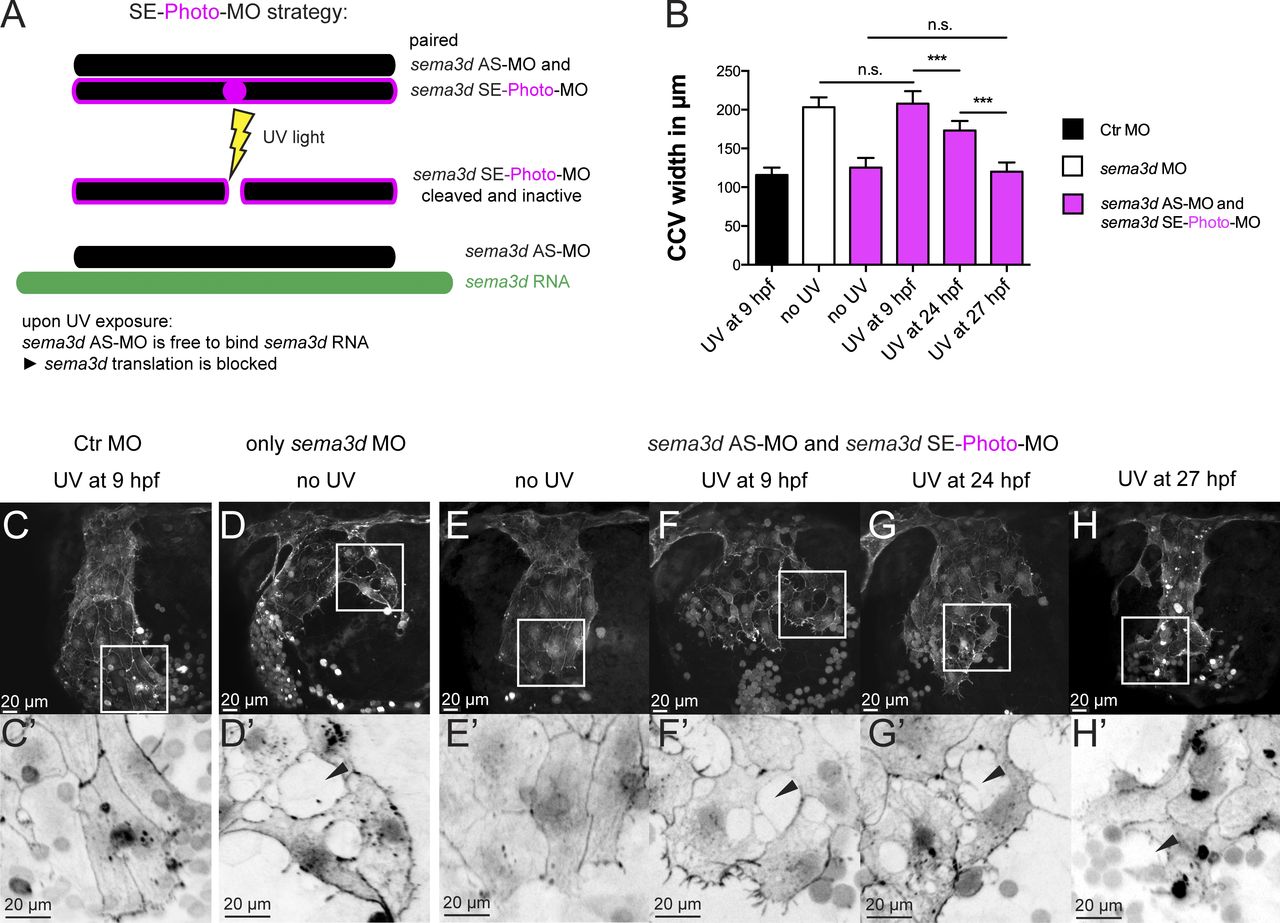Fig. 4 EC-specific Sema3d acts independently of mesenchymal Sema3d and is required for EC sheet organization and collective migration. Time-specific sema3d knockdown with photo-MOs suggests that EC-specific Sema3d is capable of preserving a cohesive EC sheet. (A) SE-photo-MO strategy for time-specific sema3d knockdown consists of the sema3d AS-MO, paired to a UV light–cleavable sema3d SE-photo-MO (together called AS+SE-photo-MO). UV light induces cleavage of the sema3d SE-photo-MO, enabling the sema3d AS-MO to bind sema3d mRNA and block translation at a chosen time point. (B–H′) Tg(fli1a:lifeactEGFP)mu240 embryos injected with Ctr MO (C), sema3d MO (D), or AS+SE-photo-MO (E–H) were exposed to UV light at the indicated time points and analyzed at 30 hpf. (B) Quantification of CCV front width (each n = 10). ***, P < 0.001; n.s., not significant. Error bars indicate SD. (C and C′) UV exposure has no effect on Ctr MO-injected embryos. (D) sema3d morphants show typical phenotype of widened CCV with lesions in the leading edge (black arrowhead). (E and E′) Without UV induction, the AS+SE-photo-MO–injected embryos resemble Ctr MO. (F and F′) UV activation of AS+SE-photo-MO–injected embryos at 9 hpf results in the sema3d MO phenotype (compare with D and D′). (G and G′) After UV exposure at 24 hpf, AS+SE-photo-MO–injected embryos exhibit an intermediate CCV width (compare with F) but disrupted cell–cell contacts (black arrowhead). (H and H′) AS+SE-photo-MO–injected embryos, exposed to UV light at 27 hpf, exhibit a CCV of normal width (compare with F) but disrupted cell–cell contacts in the front (black arrowhead).
Image
Figure Caption
Acknowledgments
This image is the copyrighted work of the attributed author or publisher, and
ZFIN has permission only to display this image to its users.
Additional permissions should be obtained from the applicable author or publisher of the image.
Full text @ J. Cell Biol.

